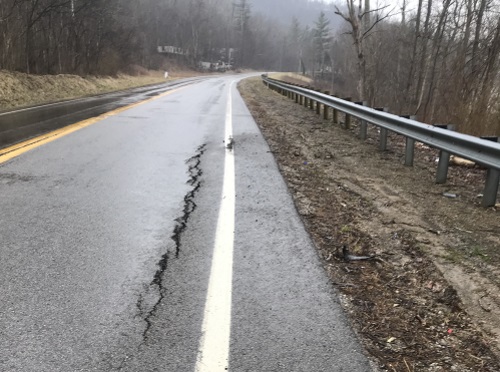A landslide repair project currently underway on SR 60 in Morgan County, Ohio, is illustrative of dozens of similar efforts initiated by the Ohio Department of Transportation aimed at keeping small landslides from growing into larger ones.
[Above photo by the Ohio DOT]
This particular $650,259 landslide project – located between Mautz Drive, also known as Township Road 1183, and the Muskingum County line – should wrap up by December 1, the agency said.
Governor Mike DeWine (R) and Ohio DOT Director Jack Marchbanks allocated $35 million in federal funding in June to proactively deal with landslides and rockslides in eastern and southern Ohio. That money comes from $333.4 million Ohio received from the $900 billion Coronavirus Response and Relief Supplemental Appropriations Act passed in late December 2020.
State departments of transportation received $10 billion of that $900 billion to help defray the loss of motor fuel tax revenues – among other fees – resulting in part from stay-at-home orders issued to combat the COVID-19 pandemic.
“This is a wise investment. If we can address these issues early, we can avoid much costlier repairs in the future,” said Gov. DeWine in a statement.
“Southeastern Ohio is prone to these types of hazards and this effort allows us to minimize the cost and inconvenience to addressing them,” Marchbanks added.
Landslide and rockslide highway repairs can cost millions of dollars and can take anywhere from weeks to months to complete.
There are broader economic impacts from landslide/rockslide blockage of highways as well. A 34-page study conducted by HDR and Decision Economics for the Appalachian Regional Commission in 2010 found that closures of I-40 and US-64 through Tennessee due to rockslides and resulting travel detours imposed $197 million in economic costs on the surrounding area due to extra travel time and additional vehicle wear and tear.

